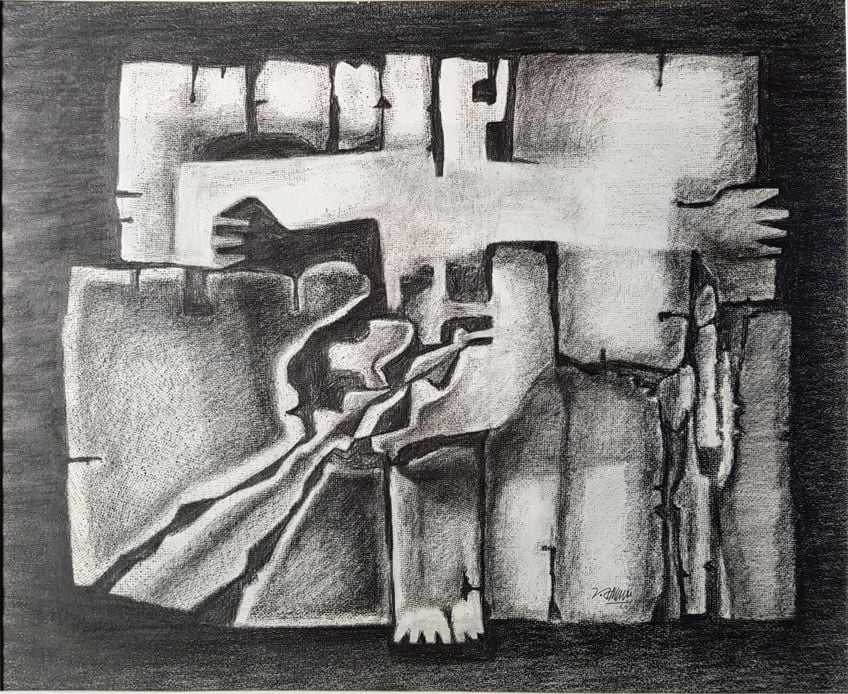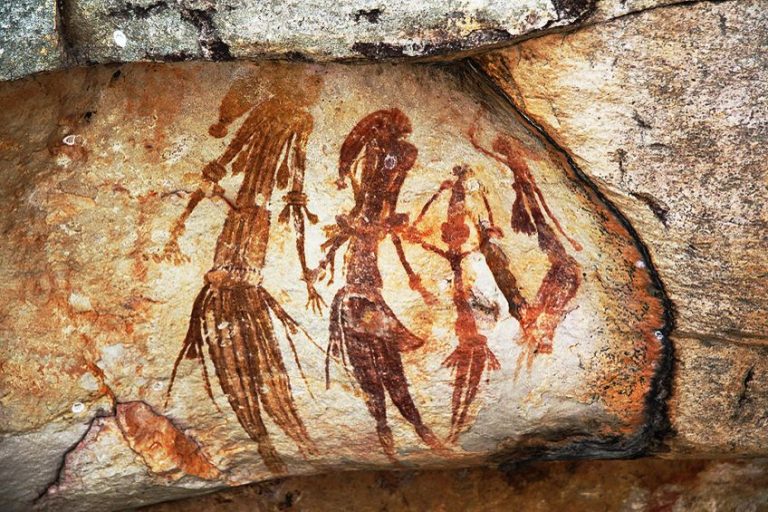What Is Frottage in Art? – Famous Frottage Art Examples
What is frottage in art and what are frottage techniques? Frottage printing is a surreal and automatic method of artistic creation in which a rough surface is rubbed with a pencil or other artistic tool. Max Ernst is credited with first experimenting with various frottage techniques. Today we will learn about this interesting technique and look at a few notable frottage art examples.
What Is Frottage in Art?
Max Ernst pioneered the method in sketches beginning in 1925. The French word for rubbing is frottage. Ernst was motivated by an old hardwood floor on which the grain of the boards had been highlighted by years of cleaning. The graining patterns reminded him of bizarre imagery. He began capturing them in 1925 by spreading sheets of paper on the floor and wiping over them with a fine pencil. The results indicate fascinating woodlands populated by bird-like animals, and Max Ernst released Natural History (1926), a compilation of these sketches. He went on to employ a variety of textured materials and soon transferred the method to oil painting, coining the term grattage. In grattage, the canvas is primed with a layer or layers of paint before being put over the coarse item and scraped over.

Frottage Art Examples
The frottage technique for frottage printing produces an unstructured design that mirrors the uneven surface on which the rubbing was performed. However, despite the irregularity of the pattern, or perhaps because of it, many artists other than Max Ernst have utilized this technique in their own works. Here are a few of the most well-known paintings that utilize the frottage technique.

Forest and Sun (1931) by Max Ernst
| Artist | Max Ernst |
| Date | 1931 |
| Medium | Graphite frottage on paper |
| Location | Museum of Modern Art, New York |
Among his numerous early memories, Max Ernst frequently mentioned his anxiety and fascination with the forest that surrounding his house. “Delight and misery, and what the Romantics termed ‘passion in the face of Nature,'” he wrote. Ernst identified with the Romantic transcendental landscape style, which saw an invisible world at work in the natural environment, by articulating his views in these terms. This gloomy and eerie woodland landscape was created during one of Ernst’s most creative times. Surrealist leader André Breton’s statement of “absolute psychological automatism” as an artistic goal inspired him to invent the unique technique of frottage, his name for the process of replicating a relief pattern.
Ernst employed this method to create a petrified woodland in Forest and Sun, which he infused with a sensation of primal otherworldliness. The artist created the ringed sun in the middle of the image by scraping away almost-dry pigment on the canvas. This is one of Max Ernst’s six variants of the woodland and sun motif. The tree branches, as in the previous five paintings, imply a letter in the painter’s name.
Frottage (1932) by Roland Penrose
| Artist | Roland Penrose (1900 – 1984) |
| Date | 1932 |
| Medium | Charcoal and colored crayons on paper |
| Location | Peggy Guggenheim Collection, Venice |
Roland Penrose was a prominent Surrealist writer, artist, gallerist, collector, and curator from England. He dabbled with the Max Ernst method of frottage. He experimented with generating unexpected visuals by rubbing paper over a rough surface with a pencil or other substance. While the shapes in this painting appear to be natural earth patterns at first inspection, the image remains cryptic.
Penrose’s collages blend cut-out bits of frottage with parts of photographic postcards, organizing them into chaotic forms and patterns yet allowing elements of familiar images to sneak through, indicating only a trace of concealed narrative meaning.
Naturgeschichte (1964) by Joseph Beuys
| Artist | Joseph Beuys |
| Date | 1964 |
| Medium | Household paint, shellac, and sand on board |
| Location | The National Gallery, London |
This artwork’s title refers to Max Ernst’s Histoire Naturelle portfolio, which was released in 1926. This piece demonstrates that Ernst and Beuys had an interest in the possibilities of the natural environment. Max Ernst often stated that he “died” at the commencement of the First World War and was resuscitated in 1918, therefore the two German painters share a “rebirth” story. Unlike Ernst, the artist Joseph Beuys decided to go straight to the source of the rubbings, displaying a piece of wood imitating floorboards with a heavily worn surface, emphasizing Ernst’s preoccupation with the metaphysical and historical characteristics buried within the natural elements around us.
The artist creates a rubbing by placing a sheet of paper over an irregular surface and then rubbing it with a sketching instrument. The design can be kept as is or may be used as a starting point for further modifications. While visually comparable to brass rubbing and other techniques of rubbing designed to copy a preexisting subject, and often used interchangeably, frottage indicates utilizing this rubbing process to produce an original image. It may seem like a pretty simple process, yet many artists have been able to make interesting patterns and textures with this technique.
Take a look at our frottage in art webstory here!
Frequently Asked Questions
What Is Frottage in Art?
Chances are that you have probably created a frottage artwork before without even realizing it! If you have ever rubbed a pencil over a piece of paper while there was a coin underneath it, thereby revealing the image on the coin – then you have produced frottage art! Artists have simply taken it a step further and applied the image to a pattern, repeating it to create the details of an artwork.
Which Artist Created Frottage?
The first artist to officially use the technique was Max Ernst. However, it’s pretty certain that he was not the first to have tried it, he certainly was the most famous. Many other artists experimented with the technique after he popularized it.
Isabella studied at the University of Cape Town in South Africa and graduated with a Bachelor of Arts majoring in English Literature & Language and Psychology. Throughout her undergraduate years, she took Art History as an additional subject and absolutely loved it. Building on from her art history knowledge that began in high school, art has always been a particular area of fascination for her. From learning about artworks previously unknown to her, or sharpening her existing understanding of specific works, the ability to continue learning within this interesting sphere excites her greatly.
Her focal points of interest in art history encompass profiling specific artists and art movements, as it is these areas where she is able to really dig deep into the rich narrative of the art world. Additionally, she particularly enjoys exploring the different artistic styles of the 20th century, as well as the important impact that female artists have had on the development of art history.
Learn more about Isabella Meyer and the Art in Context Team.
Cite this Article
Isabella, Meyer, “What Is Frottage in Art? – Famous Frottage Art Examples.” Art in Context. January 16, 2023. URL: https://artincontext.org/what-is-frottage-in-art/
Meyer, I. (2023, 16 January). What Is Frottage in Art? – Famous Frottage Art Examples. Art in Context. https://artincontext.org/what-is-frottage-in-art/
Meyer, Isabella. “What Is Frottage in Art? – Famous Frottage Art Examples.” Art in Context, January 16, 2023. https://artincontext.org/what-is-frottage-in-art/.










